Unit 1

LESSON 1
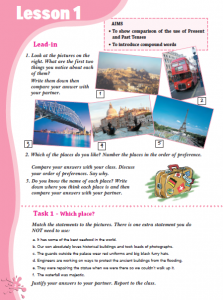
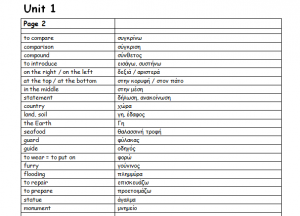

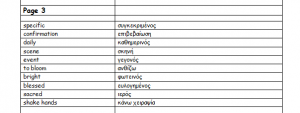
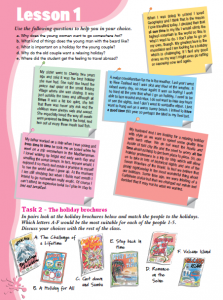
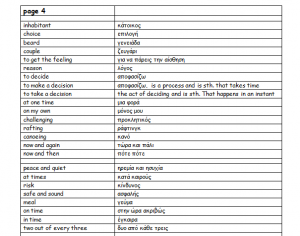
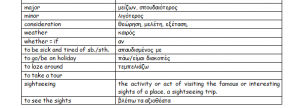
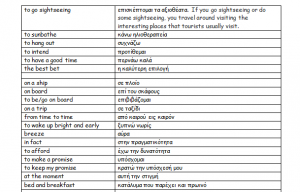
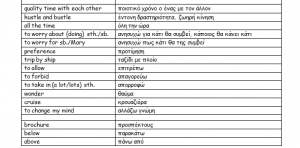

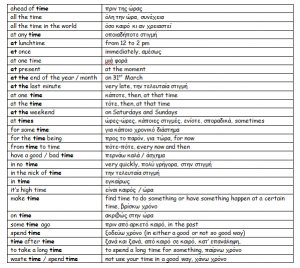

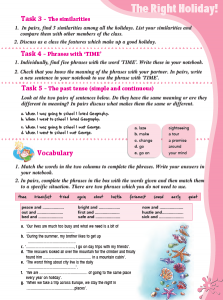
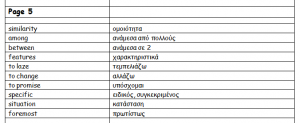

Vocabulary
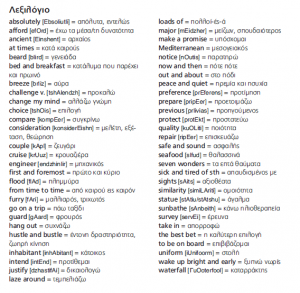
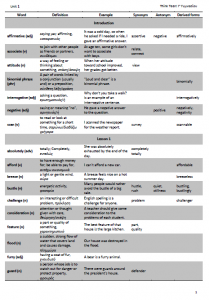
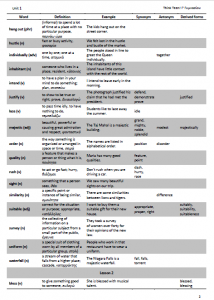
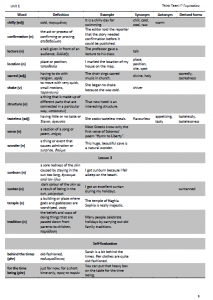
![]()
LESSON 2
vocabulary page 6

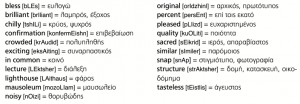

![]()
vocabulary page 7


Contrary to common belief, only the Great Pyramid of Cheops is on top of the list of the Wonders of the World. The Egyptian pharaoh built the monument around the year 2560 BC to serve as a tomb when he died. The Great Pyramid took over 20 years to build and consists of over 2 million blocks of stone. For more than 43 centuries it was the tallest building in the world. / From its building to its destruction the Colossus of Rhodes lasted only 56 years. Chares of Lindos from Rhodes, built the gigantic statue in 282 BC as a symbol of unity of the people who lived on the island. It stood near the entrance to the harbour in Rhodes and was 30 metres high. People in the Ancient world considered this to be the most beautiful structure on earth. / The Temple of Artemis at Ephesus was built in 550 BC to honour the Greek goddess of hunting, wild nature, and fertility. The temple, designed by Croesus, served as both a marketplace and a place of religion. People who visited it left gifts as a way of showing their respect for the goddess. / The fourth wonder of the world is The Hanging gardens of Babylon. Built by the king of Babylon, Nebuchadnezzar as a gift for his wife in 580 BC, the gardens contained fruit, flowers, exotic animals and waterfalls. / Next, we have the Mausoleum at Halicarnassus. It was similar to the Great Pyramid and was the burial place of an ancient king. It was the beauty of the tomb rather than its size that fascinated visitors for years. Maussollos' Mausoleum was completed around 350 BC, three years after his death. / Of the seven wonders of the world, only one had a practical use in addition to its beauty. This was the Lighthouse of Alexandria. Shortly after the death of Alexander the Great, his general Ptolemy took power and founded the city of Alexandria. He had the idea to build the lighthouse in 290 BC because sailing conditions near the coast were dangerous. / The final wonder of the Ancient world is The Statue of Zeus at Olympia inside the Temple to the same God. People felt that the Doric-style of the temple was too simple and so Pheidas began working on the statue around 440 BC. The aim was to make the temple look more attractive and decorative. In his right hand, the statue held a figure of victory made from ivory and gold, and in his left hand an eagle was on top of his sceptre. The sandals and robe of the god were made of gold.
![]()
vocabulary page 8
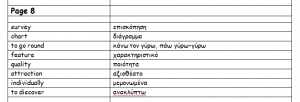
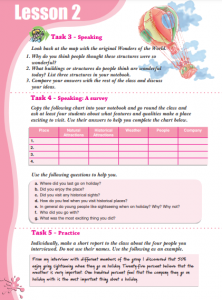
![]()
vocabulary page 9

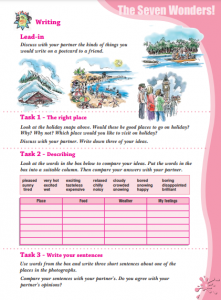
![]()
LESSON 3
vocabulary page 10


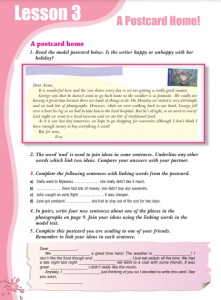
![]()
SELF EVALUATION TEST

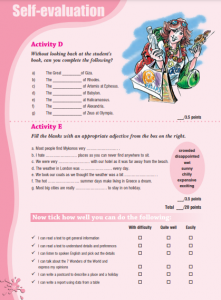
![]()
TELL THE TIME: https://blogs.e-me.edu.gr/hive-dgea-9thgrade-engl-all/tell-the-time/



